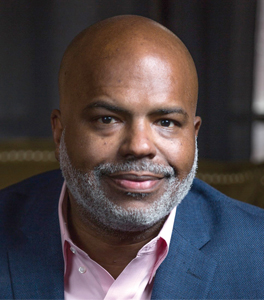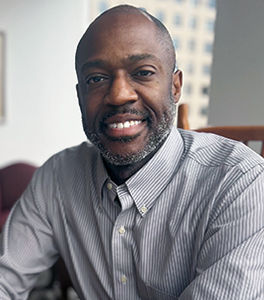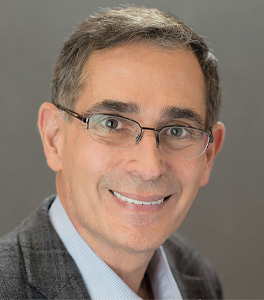 Not only is the older population growing, but it is becoming more diverse than ever. While some diversity relates to race and ethnicity, aging adults also have a wider range of interests, hobbies, life experiences, backgrounds, beliefs, sexual orientation, and gender identity. How do we deal with this diversity and make sure every resident feels included, respected, and safe to be themselves?
Not only is the older population growing, but it is becoming more diverse than ever. While some diversity relates to race and ethnicity, aging adults also have a wider range of interests, hobbies, life experiences, backgrounds, beliefs, sexual orientation, and gender identity. How do we deal with this diversity and make sure every resident feels included, respected, and safe to be themselves?
“It’s an ongoing process. We may not have everything perfect, but I am optimistic,” says Jerald Cosey, BA, HFA, CNA, a health care speaker and writer. “We are in the early stages of figuring this out, but it will be normal in 20 years. As an industry, it is imperative that we meet every resident where they are.” He added, “We have to address some parameters we haven’t addressed before. In health care, this is ever evolving. We may not be well versed on everything in advance; but when residents come in, we can meet them where they are and ensure that they have a good psychosocial experience.”
Small World, Big World
There are a wide array of special populations and communities that support them. For instance, SAGE, a national organization that provides advocacy and services for LGBTQ older adults, estimates there are over 3 million LGBTQ seniors in the U.S., and this population is anticipated to double by 2023. As a result, there are a growing number of nursing homes and other long term care communities that offer an inclusive home for these individuals. For instance, Fountaingrove Lodge in Santa Rosa, Calif., is the country’s first LGBTQ-focused senior community. The Gay & Lesbian Elder Housing (GLEH), also in California, has a mission of improving the life experience of LGBTQ older adults and individuals with HIV/AIDS.
Of course, communities don’t have to be LGBTQ-focused to be inclusive. Increasingly, it is expected potential residents and family members will ask about staff training in LGBTQ inclusion and equity, anti-discrimination policies, any dedicated onsite LGBTQ events and activities, and health care and wellness offerings that are geared toward LGBTQ older adults.
Fortunately, you don’t have to reinvent the wheel on staff training and support. There are numerous resources available. For example, AHCA/NCAL has partnered with SAGE to offer training for members, Creating Inclusive Communities for LGBTQ and HIV+ Older Adults. This online training covers the key information and skills that help to create a more inclusive environment. The course focuses on terminology, the history of the LGBTQ experience, and common questions and scenarios to make sure staff are skilled at delivering culturally competent care for this population.
 Niche Communities on the Rise
Niche Communities on the Rise
Niche or special interest communities are growing in availability and popularity. For instance, Via Health Services in Des Moines, Iowa, has opened a female-only unit for dementia and Alzheimer’s patients at their Fleur Heights senior living center. The organization wanted to create a “safe haven” for women with dementia. Elsewhere:
- Human Good has Ethiopian Village in Seattle, Wash. This started out as regular meetings to talk about Ethiopian events in the area over coffee. Residents don’t need to be Ethiopian to live there.
- My Indian Nursing Home in New York is dedicated to providing skilled nursing home care to Indian older adults. It provides a cultural program that celebrates Indian festivals, serves authentic Indian food, and offers prayers and Indian activities. Care team members include Indian physicians, CNAs, interpreters, and therapists.
- Providence Mount St. Vincent in Seattle is among the communities that offer care for older adults as well as an onsite childcare program. “The notion of intergenerational living is taking hold and providing a competitive advantage for some organizations,” said Marvell Adams, Jr., founder and CEO of the W Lawson Company. This recognizes that older adults benefit from and enjoy the companionship of younger people. At the same time, some older adults have strong ties with children, grandchildren, and even great-grandchildren and want the opportunity for them to enjoy overnight visits and/or nearby living.
Understanding, Empathy, and Empowerment
It can be challenging to deal with specific groups, particularly if you have no real baseline knowledge or experience of your own related to them. However, by talking to residents, finding out what they value, need, and want, and putting yourself in their shoes, you can find ways to accommodate and even celebrate them.
For instance, Cosey said, “I’m not a vegan, and we’ve had no experience with people wanting vegan diets to date, but it will be more and more of a preference moving forward. We always need to try and find a way to say ‘yes.’” He stressed that it’s not enough to give them vegetables, beans, and rice for every meal and expect them to be happy. It is important to provide choice and variety and enable them to enjoy meals and snacks just like anyone else.
“You need to communicate up front. If you are going to accept a vegan resident, you need to provide them with a positive experience. If you don’t currently have vegan residents, tell them that. If you take them in and promise them a positive experience, you need to deliver it,” Cosey said.
Karl Steinberg, MD, CMD, offered, “People who work in our sector need to maintain humility and openness to learn and tell people right up front: ‘I don’t know that much but I want to learn and respect and honor you.’”
The Family Factor
“We work with families and residents to get as much information as we can and engage them,” said Cosey. They can help identify activities and other things that will help the resident feel at home. They also can help staff understand why their loved one might be hesitant to ask for things they want or be open about how they are. For instance, Nicholas Watson, managing director of social enterprise at SAGE, said, “When an LGBTQ individual has to enter long term care, they often fear they will have to re-closet themselves.” Open conversations give the team an opportunity to find out how they can make each resident more comfortable and to stress that they want them to be free to be themselves.
 Beth Long-Higgins, MDiv, vice president of engagement and director, Ruth Frost Parker Center for Abundant Aging, said, “We need to reach out to residents and their families and get a reality check. Then we can work to gain some cultural humility. It’s not just about being open and allowing people to belong. It also means understanding the larger ethos of individuals and what they have experienced through their lives.”
Beth Long-Higgins, MDiv, vice president of engagement and director, Ruth Frost Parker Center for Abundant Aging, said, “We need to reach out to residents and their families and get a reality check. Then we can work to gain some cultural humility. It’s not just about being open and allowing people to belong. It also means understanding the larger ethos of individuals and what they have experienced through their lives.”
Steinberg noted, “We can’t make assumptions. When we make mistakes or incorrect assumptions, we need to apologize and determine not to repeat it.” He added, “When leaders set clear parameters, that is the biggest thing you can do.”
Inclusivity should be portrayed on the community’s website, social media pages, and other platforms. “If you go to our website, there is a banner stating ‘We are unapologetically inclusive. Deal with it.’ We don’t hide it,” said Long-Higgins.
“The best practices I see focus on person-centered care. This includes using language that doesn’t assume sexual orientation and gender identity. They reflect the language people use to identify themselves,” said Watson. “It’s okay to ask in a non-threatening way. It sends a message that it is okay to be who you are.”
Don’t Forget Staff
Respect is a two-way street. It is essential that staff respect residents even if they don’t agree with them or understand them, but residents also need to respect staff. At the same time, staff and residents can form special relationships when they share commonalities. For instance, an Ethiopian staff member can suggest menu items and activities for residents from that country; and staff who are veterans can share stories with residents who are vets and help plan holiday celebrations that are inclusive of and respectful to those who served. Staff who are vets also can alert others to the kinds of sights, sounds, smells, and other things that may trigger PTSD in residents.
When staff know that they will be respected, this can help improve recruitment and retention. As Long-Higgins said, “We’ve had LGBTQ people come to us, saying things like, ‘I chose to work here because I have a family member who is gay.’ Our commitment to inclusivity has made us a better employer.”
Creating Chemistry
Having a diverse population is a bit of a balancing act, because no group should feel that others are favored over them or that they are ignored, dismissed, or diminished. However, it is important to have ground rules that everyone understands. “There will be differences of opinions and beliefs,” Cosey said, and people should be free to be themselves but not at the expense of others’ feelings and safety. “We may have residents who wear hats or shirts with a political message, but not offensive or insulting ones. I am not going to tolerate hate,” he said, adding, “I will allow residents to meet their psychosocial needs but not when it puts others in the community in harm’s way.”
Inclusive organizations may have different populations, different programs, and unique teams. However, they have much in common. As Watson said, “Inclusive organizations share a desire to move forward and promote non-discrimination policies and share them widely. They have a deep commitment that shows up in training, and they are training everyone all the time. All this helps build communities that are welcoming for residents and staff alike.”
Moving forward, said Adams, “There is great reason for optimism. There definitely is an awareness of the need to be more inclusive than in the past. When I look across the issue, there are rays of hope that people are recognizing that inclusion means focusing on previously excluded populations and bringing them into the fold.”
Joanne Kaldy is a freelance writer and communications consultant based in New Orleans.